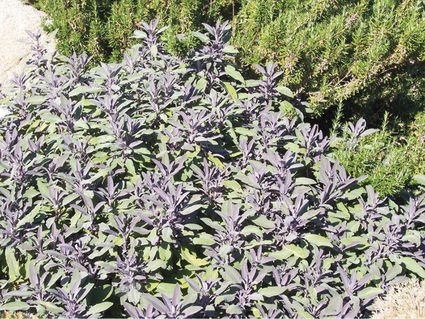Sage or sagebrush for dinner?
Herb snips
The answer is emphatically not sagebrush! This bush is in fact not salvia (sage) at all but an artemisia. The misnomer is probably because the scent is similar. I have not found an explanation for this naming error. Please let me know if you have.
There are hundreds of artemisia species. The A. tridenta is the sagebrush we are so familiar with. Like most, it has a strong aroma and bitter taste due to its terpenoids and lactones. Some artemisia species have historically been used in Chinese medicine. Some are used to treat malaria and assist in drug withdrawal issues. The species wormwood (A. absinthium) is used in the production of some wines, beers, vermouths and absinth. The only one that is edible and tasty is French tarragon (A. dracunculus). An interesting aside is that tarragon does not flower so there are no seeds available. You must buy the plant! If you find seeds with a tarragon label they will be of Russian tarragon which does not have the same flavor.
My friend, Anne Marie Novinger had a near disastrous dinner when she decided to use the A. tridenta growing in her yard for her delicious turkey stuffing. It looks and smells similar to salvia officinalis (cooking sage) but the taste is not good. Luckily her daughter arrived in time to prevent this substitution. Happily for the dinner outcome she knew the difference. Are you sure you do?
There are several varieties of salvia officinalis that are edible and hundreds that are only ornamental. The common names for some popular consumables are garden, purple, variegated, tricolor and purple. The most hardy and flavorful is the garden variety. It delivers the perfect blend of lemon, camphor and pine flavor to the taste buds. The leaves are velvety gray-green and the charming hooded flowers are most commonly purple.
All grow well in Tehachapi as perennial shrubs. They require six hours of sun daily, light soil, as well as good drainage and air circulation. Mature plants are drought tolerant. If pruned in the fall or early spring they will produce dazzling, spiked, purple flowers. Very attractive to hummingbirds! Wash and freeze leaves during the warm months when the flavor peaks. This is the optimum time to dry leaves because cold weather intensifies the camphor taste. Use the fresh flowers as tasty and decorative toppers.
Dehydrated herbs are generally three to four times stronger because of the concentration of essential oils that occurs in the drying process. Their heavy scent and flavor is very different from the milder fresh leaves. The fresh leaves and flowers add zest to salads, dressings, stuffings, breads, eggs, soups, marinades and cheese dishes. Garden sage pairs well with poultry, sausage and pork. It brightens the flavor of vegetables so you can cut back on salt.
Salvia officinalis contains essential oils that are antiseptic and mucous thinning. That is the reason for its use in cough drops and decongesting teas. The tannins in sage are astringent and may relieve indigestion. In the middle ages the twigs were used as a tooth brush. I hope you have found this column as interesting as researching it has been for me. A special thanks to Anne Marie for sharing her experience and suggesting this topic. She is always educating us! Enjoy a month of herbal exploration into salvias versus artemisias. Contact me at http://www.herbbasket.net with column suggestions and questions.





